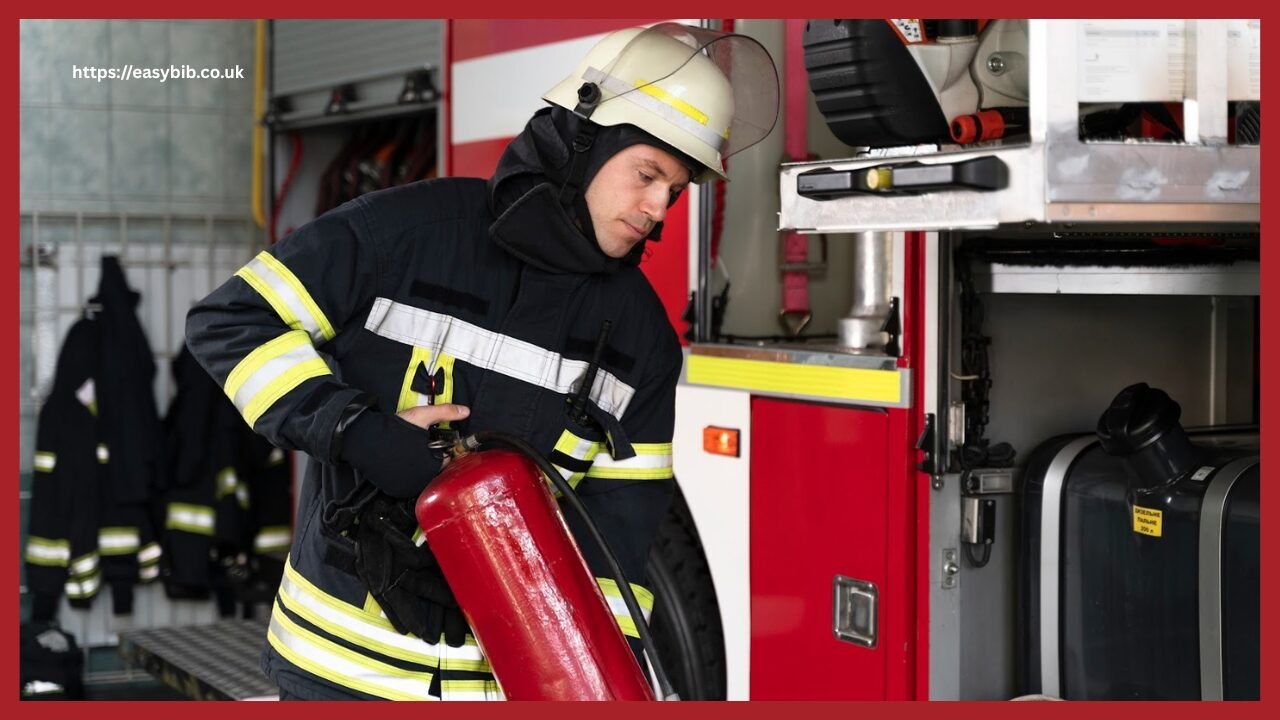Active Fire Protection and Passive Fire Protection Compared

Active fire protection and passive fire protection form the core of modern fire safety strategies. Both approaches protect buildings, safeguard occupants, and reduce fire hazards, yet they operate in fundamentally different ways. Active systems depend on human intervention or automated responses to detect smoke, suppress flames, or initiate alarms. Passive fire protection measures, on the other hand, are built into the structure itself to slow the spread of heat, smoke, and fire. Both are integral parts of a comprehensive fire protection plan, and understanding their differences is essential for selecting the right system for any building.
This blog explores the role of active and passive fire protection, the key differences between them, and how choosing the right combination can save lives, reduce structural damage, and support safe evacuation.

What is Active Fire Protection?
Active fire protection refers to systems or equipment that take direct action when a fire occurs. These systems detect smoke or heat, suppress flames, or alert building occupants and emergency services. They require either human intervention or automatic activation triggered by sensors.
Typical active fire protection systems include sprinkler systems, fire extinguishers, fire alarms, fire alarm systems, fire suppression systems, emergency lighting, smoke detectors, and portable fire extinguishers. These systems help extinguish fires early, keep evacuation routes visible, and alert people to danger.

An active fire protection system may include components such as sprinkler heads, pumps that maintain water pressure, a water supply system, extinguishing agents such as gaseous clean agents, control panels that manage fire alarm signals, and equipment designed to extinguish fires involving flammable liquids or small fire events. These active systems are essential for protecting buildings where rapid fire spread is likely, such as commercial buildings, computer rooms, kitchens, and spaces containing flammable liquids.
Active fire protection measures work as the first layer of defence, responding immediately to fires and helping emergency services control the situation more effectively.
What is Passive Fire Protection?
Passive fire protection refers to the construction and materials installed within a building to limit the spread of smoke, heat, and fire. Unlike active systems, passive fire protection systems do not require human intervention or power to function. Their role is to contain fires, maintain the building’s structural integrity, and provide time for occupants to escape.
Standard passive fire protection measures include fire doors, compartment walls, fire-resistant ceilings, intumescent coatings, fire-stopping materials, and structural protection that withstands high temperatures. These systems help protect buildings by slowing the movement of smoke and heat through different areas.
Passive fire protection protects escape routes, helps prevent rapid fire spread, and reduces the risk of structural damage. Fire doors, for example, prevent smoke from traveling and maintain a barrier even during a power failure. Compartmentation slows the spread of fire, giving building occupants more time to evacuate safely.
Passive fire protection measures are a crucial part of overall fire safety, supporting evacuation and allowing firefighters more time to control the situation.
Key Differences Between Active and Passive Fire Protection
Although both forms of fire protection serve the same goal, protecting people, property, and buildings, they function very differently. Understanding these differences helps in developing a balanced fire protection strategy.
Response to fire
Active fire protection responds directly to fire through extinguishing, detection, or alerting. Systems such as water mist systems, fire sprinklers, smoke detectors, and fire extinguishers are designed to detect smoke, heat, or flames before taking action. Their purpose is to extinguish fires or reduce their spread.

Passive fire protection measures do not respond actively. Instead, they prevent fires from growing or spreading by containing heat and smoke. Fire doors, compartment walls, and fire-resistant barriers help maintain separation between areas and protect evacuation routes.
System components
Active fire protection systems include components such as sprinkler heads, extinguishing agents, fire blankets, control panels, fire alarm system wiring, smoke detectors, and pumps that maintain water pressure. These systems rely on electrical power, human intervention, or automated activation.
Passive fire protection systems consist of structural components such as compartment walls, fire doors, insulation, and coatings installed during construction. They are part of the building fabric and operate continuously without activation.
Maintenance requirements
Active fire protection measures require regular maintenance. Fire protection products such as fire extinguishers, fire suppression systems, fire alarm systems, and emergency lighting must be routinely inspected, tested, and maintained to ensure proper operation. Regular maintenance is essential because these systems involve mechanical and electrical parts that can fail.
Passive fire protection systems require less frequent servicing but must still be maintained to ensure their integrity. Fire doors must close properly without obstruction, compartment walls must remain intact after refurbishment, and fire stopping must be inspected during building modifications. While passive systems need fewer interventions, they are equally important for overall system reliability.
Speed of action
Active fire protection systems respond immediately upon activation. Fire sprinkler systems activate quickly when they detect heat, fire alarms alert occupants instantly, and extinguishing systems release their agent to extinguish fires rapidly.
Passive fire protection measures act by resisting the spread of fire over time. They do not extinguish fires but slow their development, buying time for evacuation and emergency response.
Construction and installation
Active systems such as sprinklers, smoke detectors, and fire alarms require electrical wiring, a water supply system, installed pump systems, and strategic placement throughout the building. They usually require professional installation and ongoing servicing.
Passive systems are installed within the building’s structure during construction or refurbishment. These measures are built into walls, doors, floors, and ceilings. Their installation must meet building regulations and fire safety standards to ensure they provide effective compartmentation and protection.
Why Active Fire Protection is Important
Active fire protection plays a crucial role in limiting damage, protecting occupants, and preventing fires from escalating. It works in coordination with passive fire protection measures to create a robust and multi-layered safety system.
Rapid suppression reduces property damage.
Active fire suppression systems act quickly to extinguish fires, reducing property damage and limiting the spread of flames. A sprinkler system can release water directly onto a fire, cooling the area and controlling flames before they cause extensive structural damage. Fire extinguishers and fire blankets allow trained individuals to manage minor fire incidents before they escalate.
Rapid suppression protects valuable assets, prevents heat and smoke from destroying equipment such as computer systems, and reduces the financial impact of repairs. This makes active fire protection systems a cost-effective solution in many commercial buildings.
Enhances occupant safety
Active fire protection systems significantly reduce risks to building occupants. Smoke detectors and fire alarms alert people to evacuate, while emergency lighting shows clear escape routes even during a power failure. Active systems help save lives by providing early warnings that support quick evacuation.
Fire sprinkler systems and gaseous clean agent systems control or extinguish fires, reducing heat and smoke levels. This helps protect occupants from dangerous conditions and allows firefighters to respond more effectively.
Complements passive fire protection measures
Active and passive fire protection are not alternatives but partners. Active fire protection measures directly extinguish fires or alert occupants, while passive systems slow the spread and protect critical pathways.
Fire doors, for example, maintain compartmentation while sprinklers suppress flames. Compartment walls slow the spread of heat, giving sprinklers more time to operate. The combination of both forms of fire protection ensures buildings remain protected even if one system is slow to respond.
Choosing the Right Fire Protection Strategy
Selecting the right fire protection systems requires a thorough fire risk assessment. Every building is unique, and factors such as layout, occupancy levels, fire hazards, flammable liquids, equipment type, and building purpose influence system selection.
A balanced approach that includes both active and passive fire protection is generally recommended. Passive fire protection systems form the foundation by containing fire and protecting structural integrity. Active fire protection systems, such as commercial misting systems, fire alarm systems, fire sprinkler system installations, portable fire extinguishers, fire blankets, and smoke detectors, act as responsive tools that extinguish fires or alert occupants.

Commercial buildings often require extensive fire sprinkler systems, emergency lighting, and advanced fire detection systems. Residential buildings may rely more heavily on smoke alarms, basic fire extinguishers, and fire doors. Computer rooms or high-risk areas containing flammable liquids may require gaseous clean agents or specialised fire suppression systems.
Any fire protection system must be correctly installed, regularly inspected, and properly maintained to ensure reliability. Combining active and passive measures provides an additional layer of protection, keeping buildings safe, supporting evacuation, and reducing fire risks.
READ MORE
Final Thoughts
Active fire protection and passive fire protection play complementary roles in overall fire safety. Active systems, such as water mist systems, fire sprinklers, fire extinguishers, fire alarms, smoke detectors, and emergency lighting, respond directly to fires by detecting, signalling, or suppressing them. Passive fire protection systems, such as fire doors, compartment walls, and fire-resistant materials, slow the spread of fire and protect the structure.
Both are essential for protecting buildings, safeguarding occupants, supporting evacuation, and reducing structural damage. A balanced approach combining active and passive fire protection measures provides the highest level of safety and ensures that fires are quickly and effectively controlled.
A well-designed fire protection strategy, supported by proper installation, regular maintenance, and a comprehensive fire risk assessment, helps prevent fires, save lives, and provide lasting protection for property and people.
